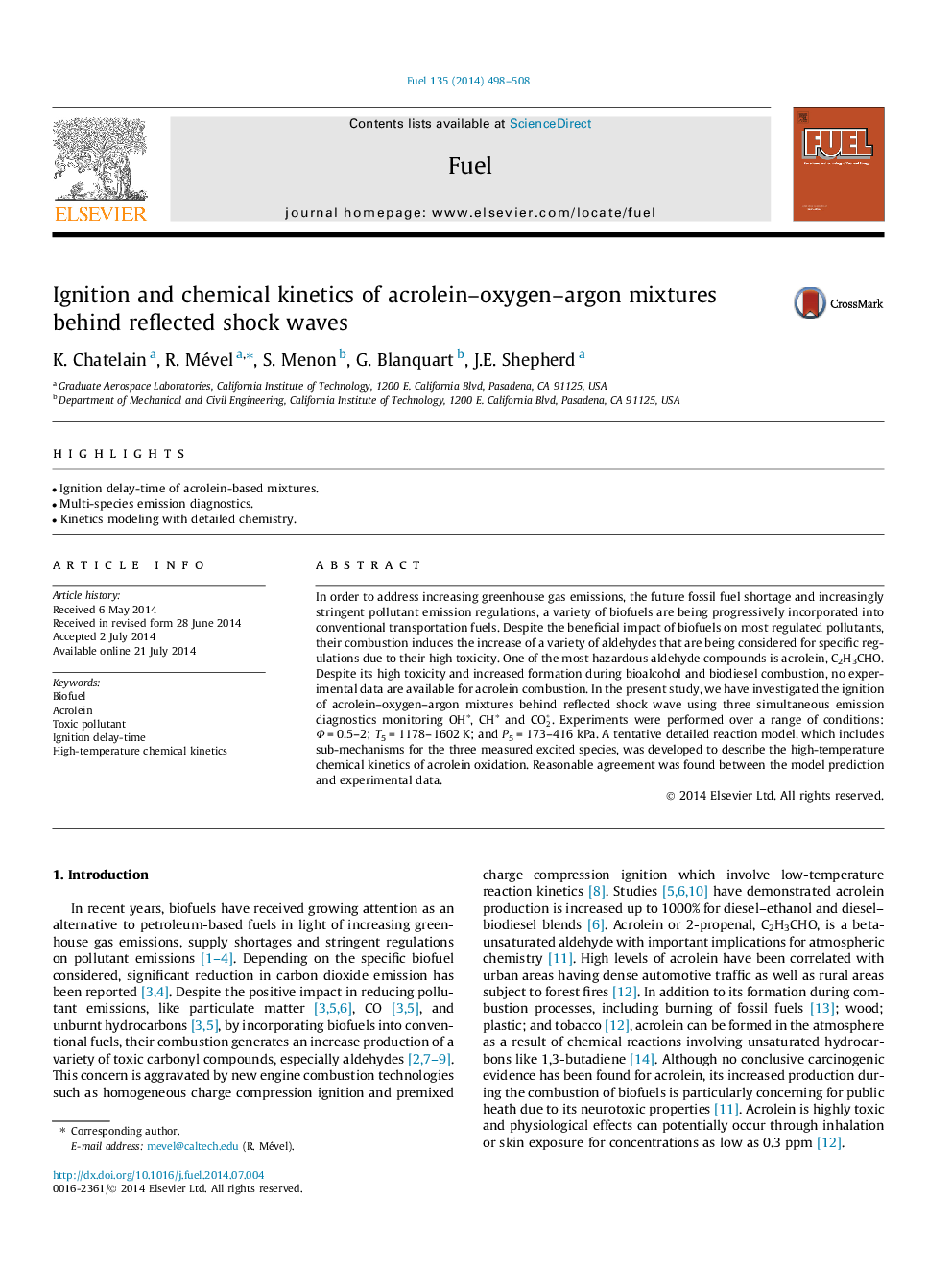| Article ID | Journal | Published Year | Pages | File Type |
|---|---|---|---|---|
| 6637011 | Fuel | 2014 | 11 Pages |
Abstract
In order to address increasing greenhouse gas emissions, the future fossil fuel shortage and increasingly stringent pollutant emission regulations, a variety of biofuels are being progressively incorporated into conventional transportation fuels. Despite the beneficial impact of biofuels on most regulated pollutants, their combustion induces the increase of a variety of aldehydes that are being considered for specific regulations due to their high toxicity. One of the most hazardous aldehyde compounds is acrolein, C2H3CHO. Despite its high toxicity and increased formation during bioalcohol and biodiesel combustion, no experimental data are available for acrolein combustion. In the present study, we have investigated the ignition of acrolein-oxygen-argon mixtures behind reflected shock wave using three simultaneous emission diagnostics monitoring OHâ, CHâ and CO2â. Experiments were performed over a range of conditions: Φ = 0.5-2; T5 = 1178-1602 K; and P5 = 173-416 kPa. A tentative detailed reaction model, which includes sub-mechanisms for the three measured excited species, was developed to describe the high-temperature chemical kinetics of acrolein oxidation. Reasonable agreement was found between the model prediction and experimental data.
Related Topics
Physical Sciences and Engineering
Chemical Engineering
Chemical Engineering (General)
Authors
K. Chatelain, R. Mével, S. Menon, G. Blanquart, J.E. Shepherd,
